Nutrition Essentials for Nursing Practice 6th Edition by Susan G. Dudek – Test Bank
Chapter 4
Fat is classified as either “good” fat or “bad” fat, or saturated and unsaturated fatty acids. What is the difference between saturated and unsaturated fatty acids?
A)
The number of carbon atoms
B)
Unsaturated fatty acids have at least one double bond between carbon atoms
C)
The way they are absorbed
D)
Saturated fats are found only in animal products
|
2. |
Many of our foods are now labeled “heart healthy” to designate their nutritional superiority for our body. Which of the following oils is considered “heart healthy”? |
|
A) |
Corn oil |
|
B) |
Olive oil |
|
C) |
Coconut oil |
|
D) |
Sunflower oil |
|
3. |
Linoleic acid and alpha-linoleic acid are two fatty acids considered to be n-3 fatty acids. Another name for these fatty acids is omega-3 fatty acids. What are the best sources of omega-3 fatty acids? |
|
A) |
Cold-water fish, such as mackerel, salmon, sardines, and lake trout |
|
B) |
Meats, such as beef, veal, lamb, and pork |
|
C) |
Foods made with hydrogenated oils, such as cookies, crackers, stick margarine, and shortening |
|
D) |
Milk and milk products |
|
4. |
Cholesterol, a waxy substance found in all cell membranes, is found only in what foods? |
|
A) |
Saturated fats |
|
B) |
Hydrogenated fats |
|
C) |
Foods made from plants |
|
D) |
Animal products |
|
5. |
In the past few years much has been made of trans-fatty acids. The American public has been warned to attempt to eliminate “trans fats” from their diets. Why has this been encouraged? |
|
A) |
Trans-fatty acids raise the level of “bad” cholesterol in the blood. |
|
B) |
Trans-fatty acids lower the level of “bad” cholesterol in the blood. |
|
C) |
Trans-fatty acids are found in coconut, palm, and palm kernel oils. |
|
D) |
Trans-fatty acids account for most fat calories in the average American’s diet. |
|
6. |
Fatty acids are either essential or non-essential. What makes some fatty acids essential? |
|
A) |
They are only found in fish. |
|
B) |
They are saturated fatty acids. |
|
C) |
They cannot be synthesized by the body. |
|
D) |
They are found only in animal products. |
|
7. |
You are eating 1 tablespoon of a salad dressing that contains 14 g of fat and no protein or carbohydrate. How many calories will you consume in the salad dressing? |
|
A) |
76 cal. |
|
B) |
98 cal. |
|
C) |
126 cal. |
|
D) |
140 cal. |
|
8. |
It has been found that fats that are hydrogenated are what? |
|
A) |
Found in cold-water fish |
|
B) |
More likely to oxidize and become rancid than vegetable oils |
|
C) |
More saturated than the original oil from which they were derived |
|
D) |
Less saturated than the original oil from which they were derived |
|
9. |
Nutritional recommendations include lowering the intake of total fat in our diets. What is one strategy we can use to lower total fat intake in our diets? |
|
A) |
Substitute regular margarine for butter. |
|
B) |
Use artificially sweetened soft drinks in place of sweetened drinks. |
|
C) |
Use herbs and spices in place of butter. |
|
D) |
Use olive oil in place of corn oil. |
|
10. |
The recommendation for fat intake in the American diet is what? |
|
A) |
10% of total calories |
|
B) |
20% of total calories |
|
C) |
30% of total calories |
|
D) |
40% of total calories |
|
11. |
Which of the following is true of cholesterol? |
|
A) |
Cholesterol provides 9 cal/g. |
|
B) |
Cholesterol is an essential nutrient because it cannot be synthesized by the body. |
|
C) |
Cholesterol in food comes from plants (the “good” cholesterol) and from animal products (the “bad” cholesterol). |
|
D) |
Cholesterol is used by the body to synthesize bile acids and vitamin D. |
|
12. |
When does the body break down fatty acids incompletely creating an increase in ketone formation? |
|
A) |
Starvation and uncontrolled diabetes |
|
B) |
Periods of a high-fat intake |
|
C) |
Coronary heart disease |
|
D) |
Fat malabsorption syndromes |
|
13. |
What process in the body impairs the digestion of fat? |
|
A) |
Diabetes |
|
B) |
Stomach ulcer |
|
C) |
Inflammation of the pancreas |
|
D) |
Constipation |
|
14. |
The body is very efficient at converting what, when it is in excess, into adipose tissue? |
|
A) |
Sugars |
|
B) |
Starches |
|
C) |
Protein |
|
D) |
Fat |
|
15. |
What is “good” cholesterol? |
|
A) |
High-density lipoproteins |
|
B) |
Low-density lipoproteins |
|
C) |
Very-low-density lipoproteins |
|
D) |
Chylomicrons |
|
16. |
What do experts recommend limiting to cut saturated fat intake in the diet? |
|
A) |
Butter |
|
B) |
Beef |
|
C) |
Cakes and cookies |
|
D) |
French fries |
|
17. |
The fruit food group of the MyPyramid is virtually fat free. What is the exception to the rule in this food group? |
|
A) |
Avocado |
|
B) |
Banana |
|
C) |
Cherries |
|
D) |
Pineapple |
|
18. |
The serving size of a piece of meat is approximately the size of a deck of cards. What is its approximate weight? |
|
A) |
2 ounces |
|
B) |
3 ounces |
|
C) |
6 ounces |
|
D) |
8 ounces |
|
19. |
High-fat diets are known to be a leading cause of obesity in America. What are high-fat diets also implicated in? |
|
A) |
Pancreatitis |
|
B) |
Insulin resistance |
|
C) |
Cystic fibrosis |
|
D) |
Liver disease |
|
20. |
What dietary component raises serum cholesterol more than any other? |
|
A) |
Cholesterol |
|
B) |
Polyunsaturated fat |
|
C) |
Saturated fat |
|
D) |
Monounsaturated fat |
|
21. |
Monounsaturated fats are liquid at room temperature. Where are monounsaturated fats predominantly found? |
|
A) |
Meat |
|
B) |
Olive oil |
|
C) |
Fish |
|
D) |
Corn oil |
|
22. |
Even at rest the body has energy requirements. How much of the body’s caloric needs at rest are provided by fat? |
|
A) |
30% |
|
B) |
40% |
|
C) |
50% |
|
D) |
60% |
|
23. |
The stability of fats is influenced by their degree of unsaturation. Which fats are most susceptible to rancidity? |
|
A) |
Saturated fats |
|
B) |
Monounsaturated fats |
|
C) |
Polyunsaturated fats |
|
D) |
Trans fats |
|
24. |
What is the recommended dietary allowance of monounsaturated fats? |
|
A) |
30% |
|
B) |
35% |
|
C) |
40% |
|
D) |
There is none |
|
25. |
You are teaching a nutrition class in a bariatric clinic. One of your students asks, “If fat isn’t good for you, why not go on a fat-free diet?” You explain that fat does have several functions in food. What is one of those functions? |
|
A) |
It absorbs flavors and aromas of ingredients to improve overall taste. |
|
B) |
It makes meat more rare when you cook it. |
|
C) |
It makes cheese have a rubbery feel. |
|
D) |
It increases rancidity in foods. |
|
26. |
What are the recommended daily requirements of EPA and DHA to reduce the risk of heart disease? |
|
A) |
500 mg/day |
|
B) |
600 mg/day |
|
C) |
800 mg/day |
|
D) |
1000 mg/day |
|
27. |
Which fat is not digested by the body? |
|
A) |
Monounsaturated fat |
|
B) |
Cholesterol |
|
C) |
Phospholipid |
|
D) |
Trans fat |
|
28. |
Phospholipids are unique in that they can act as what in the body? |
|
A) |
Absorbents |
|
B) |
Stabilizers |
|
C) |
Solutes |
|
D) |
Emulsifiers |
|
29. |
What are the main reasons to hydrogenate a fat? |
|
A) |
Improve function and increase rancidity |
|
B) |
Improve function and decrease rancidity |
|
C) |
Decrease function and stabilize |
|
D) |
Decreases function and destabilize |
|
30. |
Trans fats are considered “bad” fats. What do they do in the body? (Mark all that apply.) |
|
A) |
Lower HDL-cholesterol |
|
B) |
Increase insulin resistance |
|
C) |
Lower biomarkers of inflammation |
|
D) |
Raise biomarkers of inflammation |
|
E) |
Decrease the risk of colon cancer |
Answer Key
1.
B
2.
B
3.
A
4.
D
5.
A
6.
C
7.
C
8.
C
9.
C
10.
C
11.
D
12.
A
13.
C
14.
D
15.
A
16.
B
17.
A
18.
B
19.
B
20.
C
21.
B
22.
D



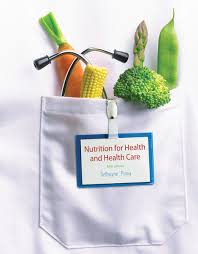


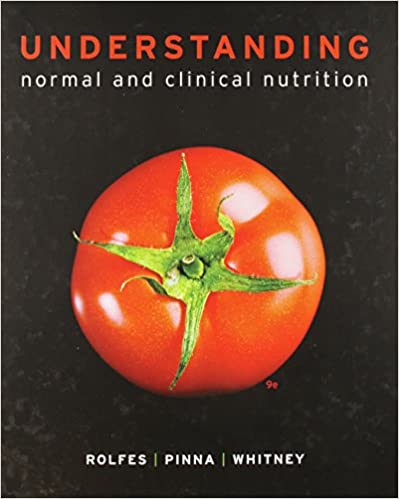
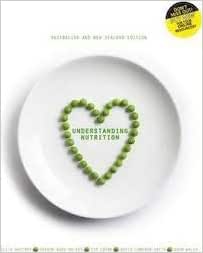


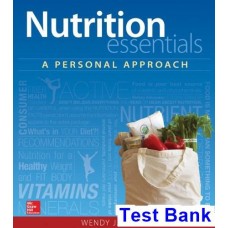
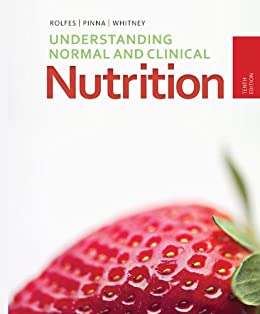
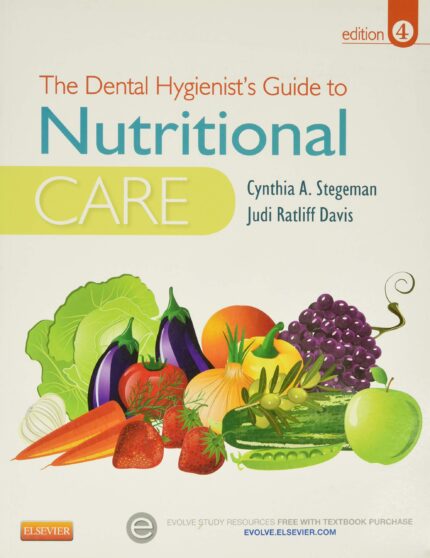
Reviews
There are no reviews yet.